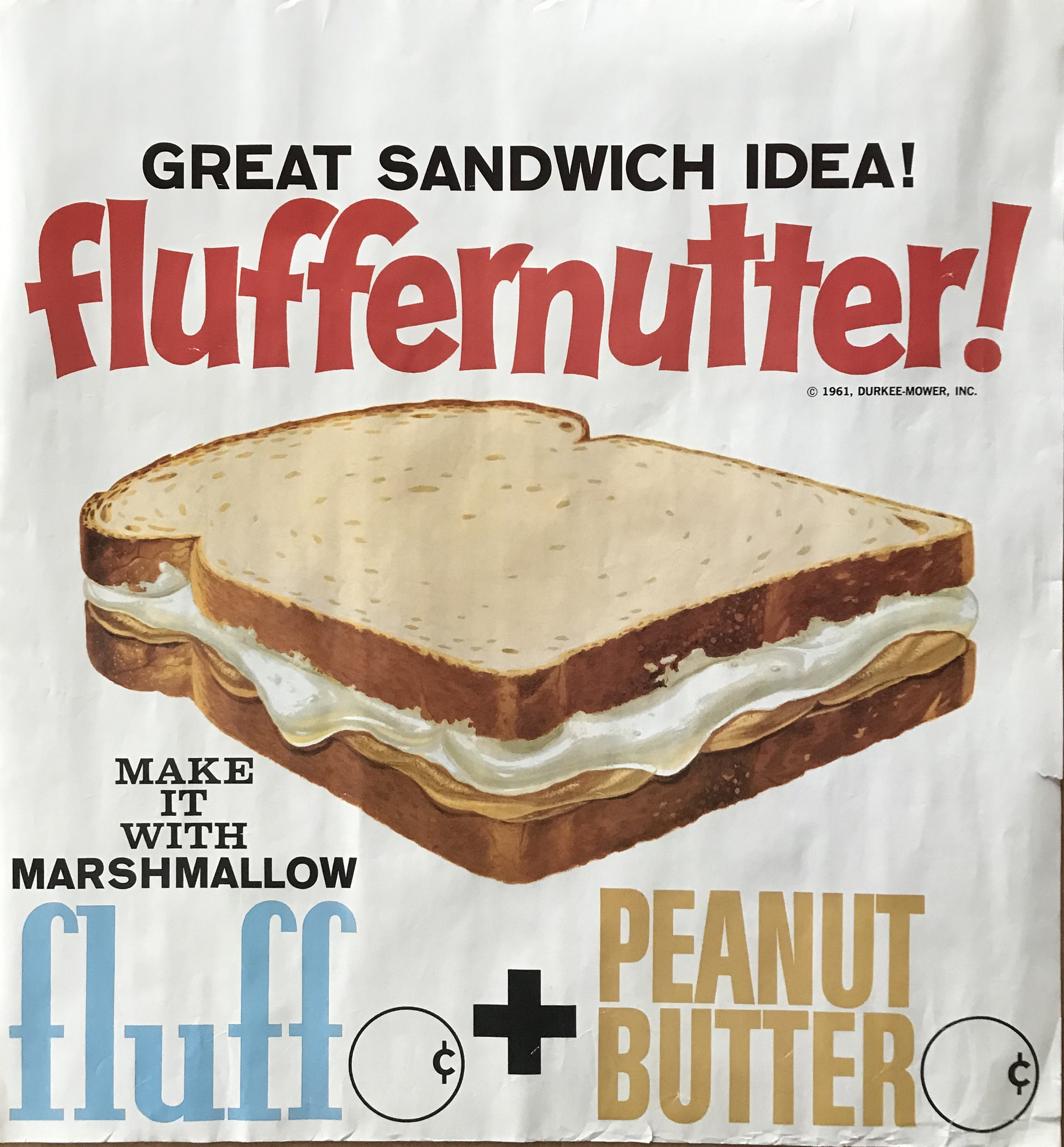STILL LIFE AND ADVERTISING
In the late ’40s and early ’50s, when advertising relied heavily on illustration, Moss was eager to take any assignments that came his way. Still life painting was at the core of Moss’s development as an artist and the basis for much his work throughout this career. From tight renderings of liquor bottles to the iconic Fluffernutter sandwich for the Fluff jar label, he enjoyed the challenge of creating an idealized realism for advertising assignments. Moss’s son still remembers delivering the final Fluffernutter art with his dad in 1961. (This label is still in use as a tiny image on the back of the jar.)
As you look through the sections of this website, note of the dates to see his rapid development of skills from the time he left the Marines in 1946 to the time of his first commercial assignments in 1948. His single year at Pratt seems to have been formative. Over his lifetime, he was especially influenced by American 19th-century still-life painter, William Harnett, who specialized in trompe l’œil. Building his skills to create paintings that would “fool the eye,” Moss returned to this technique in his paintings throughout his life.
Brooklyn View, 15x21, Tempera/Board, 1946
25 Planes, 21x16, Gouache/board, Colliers Magazine, 1948
Private Collection
Hiram Walker Brandy, 1948, magazine clipping
Private Collection
Fishing Still Life, 13x17.5, Gouache/Board, 1948
Private Collection
Maraschino Bols Liqueur, 10x12, Gouache/Board, 1948
Still Life with Fruit, Gouache/Board, 1948
Private Collection
Elks Magazine guache/board 13x18, April 1949
Courvoisier, 1951, magazine page
Skiing Still Life, 14.5x16.5 Gouache/Board, Todays Living Magazine, 1958
Private Collection
Skiing Still Life, 13x15, Gouache/Board/Varnish, 1952
Private Collection
Tennessee Gas, 1956, magazine page
Bird Dog Pride, 11x14.5, Gouache/Board, Good Housekeeping Magazine, 1957
Dupont - Brushes, 1958, magazine page
Cities Service, 1958, magazine page
Massachusetts Map 21.5x35 Tempera/Board c1960
Private Collection
Fluffernutter Sandwich, 1961, poster
Irving Trust - Street Signs, 1962, magazine page
Origins of Angling, 14x12.5, Gouache/Board, Book Cover, 1963
Lobster in Ice, 1963, magazine page
Private Collection
Kentucky Derby, 17.5x23.5, Gouache/Board, Sports Illustrated, 1964
Private Collection
Mushrooms, 14x14, Gouache/Board, Sports Illustrated, 1965
Private Collection
Dodger Shirt, 16.5x23, Poster, Sports Illustrated, 1967
Signed posters available
Alaska Prudhoe Bay North Slope 27x21 Tempera/Board Sports Illustrated 1969
French Alps 12x17 Tempera/Board Sports Illustrated 1969
Large Mouth Bass 23x19, Poster, 2002
Rainbow Trout 23x19, Poster, 2002


























